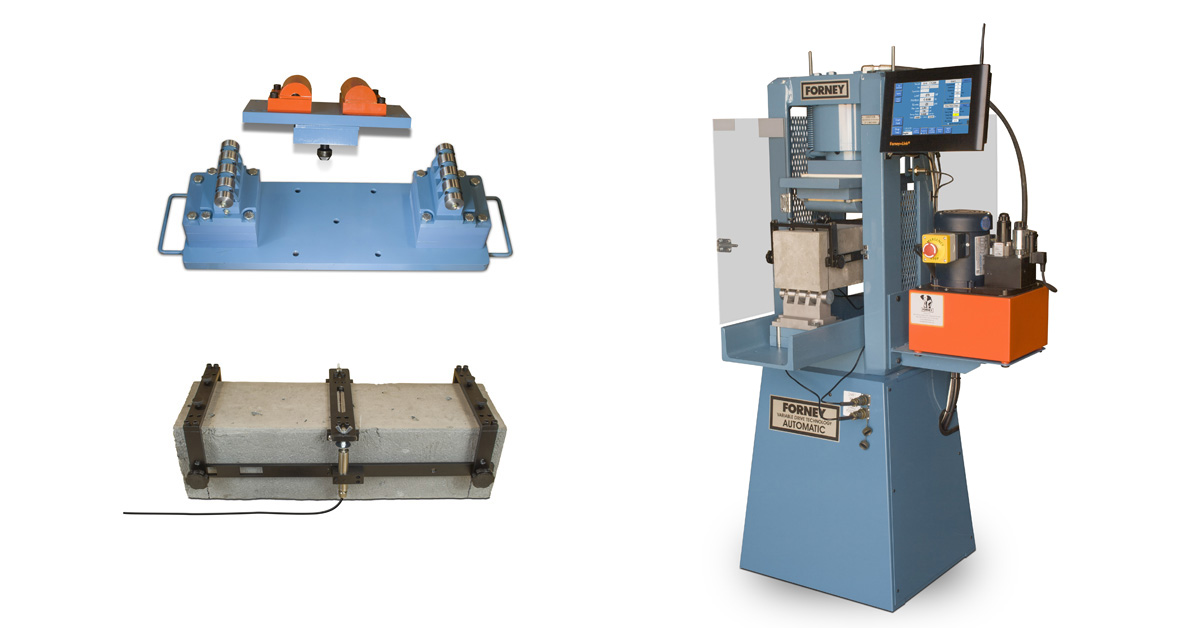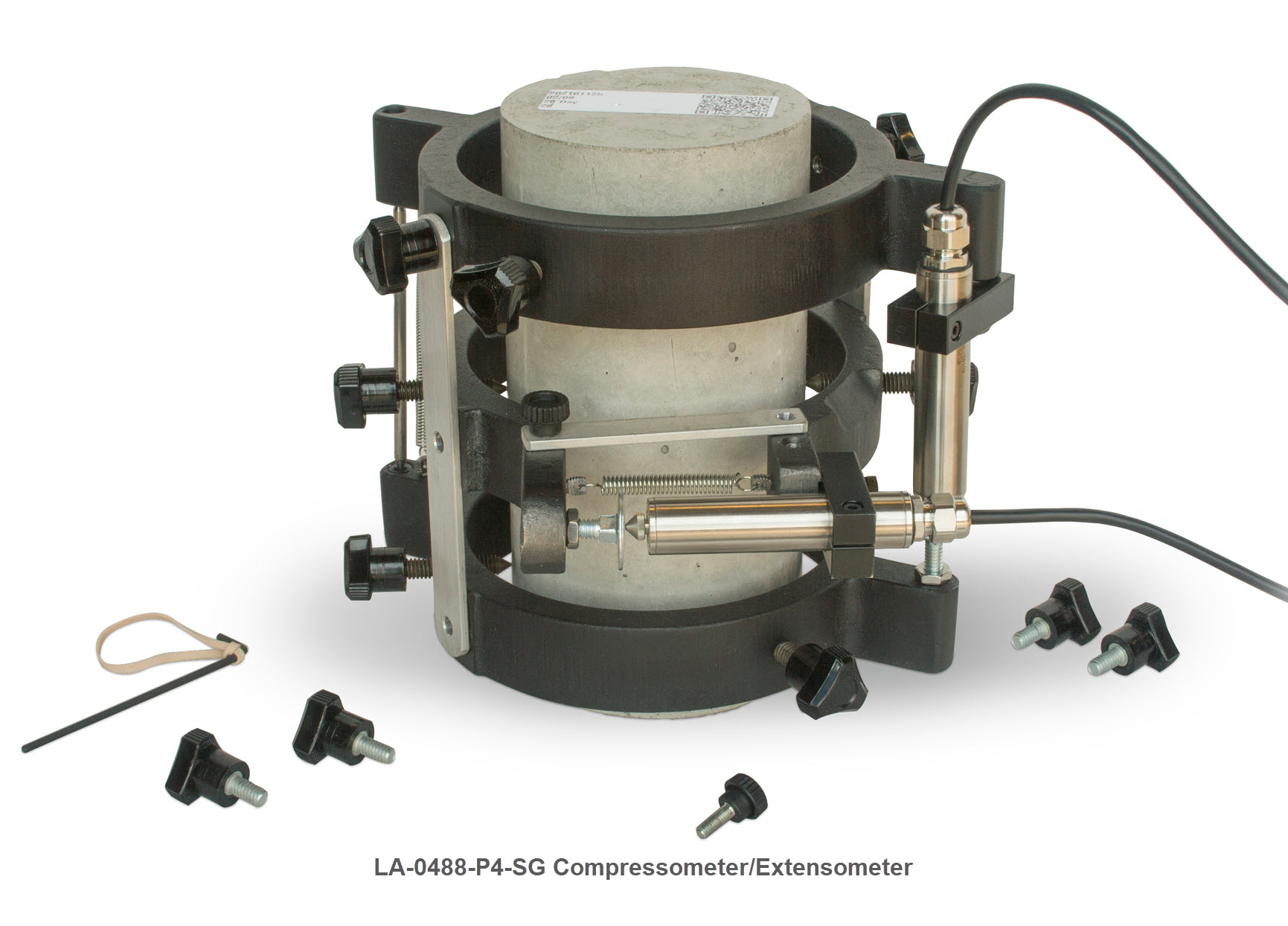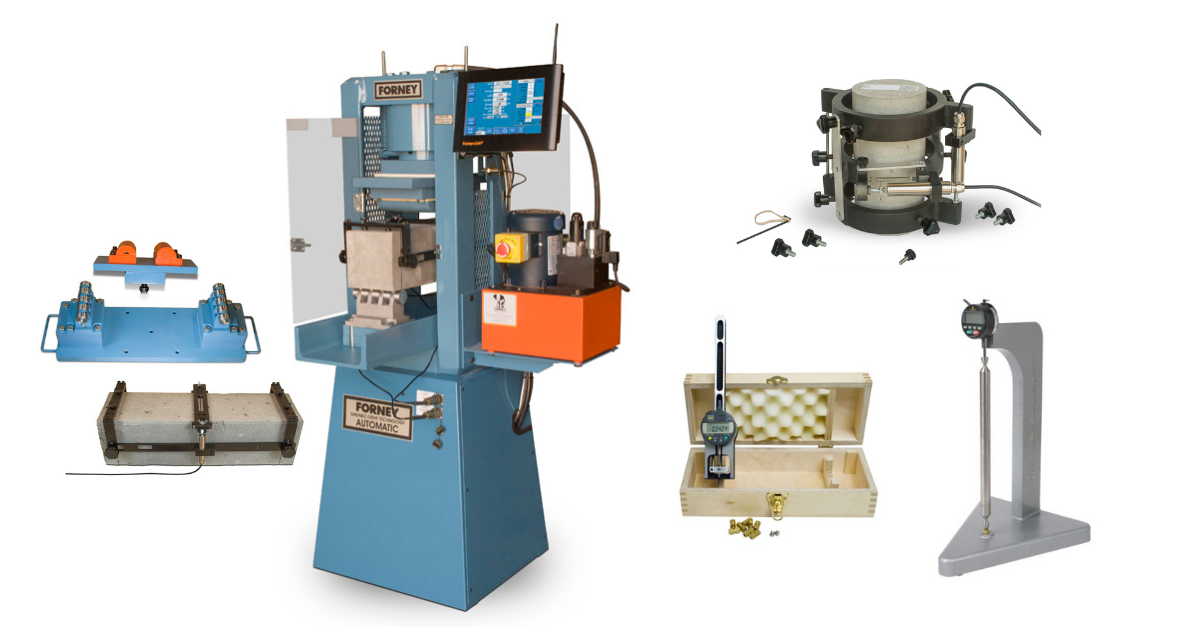Construction projects that demand exceptional strength, durability, and longevity—such as bridges—often utilize Ultra-High Performance Concrete (UHPC), an advanced form of reinforced concrete designed to exceed traditional performance standards. ASTM C1856 provides the standard method for fabricating and testing specimens of UHPC.
In this simple guide, we cover the basics of everything you need to know about Ultra-High Performance Concrete and its associated testing standard:
- What is UHPC?
- How is testing Ultra-High Performance Concrete different from regular concrete?
- What tests are included in ASTM C1856?
- What equipment do I need to test UHPC per ASTM C1856?
- What is the standard procedure for ASTM C1856?
- How do I manage results from ASTM C1856?
What Is Ultra-High Performance Concrete (UHPC)?
Definition of UHPC
Ultra-High Performance Concrete is a type of concrete that delivers exceptional strength and durability, made from an optimized gradation of fine aggregates, a low water-to-cement ratio, and reinforcing fibers.
Steel fibers are the most common type of fibers used in UHPC, but synthetic or carbon fibers are used in specific applications.
History of UHPC
First used by the United States Army Corps of Engineers in the 1980s, Ultra-High Performance Concrete became commercially available in the U.S. in 2000. Since then, state departments of transportation, research institutes and the Federal Highway Administration have researched and deployed UHPC to test its capabilities in infrastructure projects. The first U.S. deployment of UHPC occurred in highway infrastructure in 2006. Today, it’s used in over 400 bridges across the country.
As UHPC is used more and more — especially for repairing existing bridges – the importance of quality control testing can’t be overstated. However, just because “concrete” is in the name doesn’t mean UHPC is tested the same way as traditional concrete.
How Is Testing UHPC Different from Traditional Concrete?
Ultra-High Performance Concrete vs. Traditional Concrete
Ultra-High Performance Concrete and regular concrete are both considered cementitious composite materials. This is because they are both made from a mixture of cement (the primary binding agent), aggregates (like sand, gravel, or crushed stone), and water.
However, regular concrete typically includes larger aggregates, a higher water-to-cement ratio, and no specialized fibers. Typical properties include:
- Compressive strength in the range of 5,000 to 8,000 psi.
- Standard tensile strength
- Moderate durability
- Susceptible to cracking and weathering without additives
UHPC, meanwhile, uses fine aggregates, a lower water-to-cement ratio, and reinforcing fibers, lending different properties.
- Compressive strengths as high as 35,000 psi
- High tensile strength thanks to the fibers
- High durability
- Self-healing properties
- Low permeability
- High resistance to cracking and weathering
To properly test all the different properties of UHPC, a different standard is needed.
Testing Differences
While traditional concrete follows ASTM C39, Ultra-High Performance Concrete follows ASTM C1856. Here are some of the key differences:
- Test Preparation: Regular concrete cylinders are made using vibration or tamping rods to remove air pockets. UHPC specimens should not be tamped or vibrated, instead relying on the self-consolidation nature of the material. Vibration or tamping would disrupt the integrity of the fiber distribution.
- Curing: While specific temperature and duration of curing depends on the mix, UHPC contains less water, which means it needs to be covered as soon as possible to prevent the specimens from drying out.
- Test Procedure: ASTM C39 focuses on compressive strength. ASTM C1856 includes additional tests such as tensile strength and flexural strength.
Tests Included in ASTM C1856
- Compression Testing according to ASTM C39
- Flexural Strength Testing according to ASTM C1609
- Static Modulus of Elasticity & Poisson’s Ratio according to ASTM C469
- Creep in Compression according to ASTM C512
- Length Change according to ASTM C157 or C341
- Resistance to Abrasion according to ASTM C944
- Resistance to Freezing and Thawing according to ASTM C666
- Penetration of Chloride Ions according to ASTM C1202
Recommended Equipment for ASTM C1856
ASTM C1856 is applicable to Ultra-High Performance Concrete with a specified compressive strength of at least 17,000 psi, a nominal maximum aggregate of less than 1⁄4 in, and a flow between 8 and 10 in.
Here’s what you will need to perform the tests included in ASTM C1856.
- Compression testing machine to measure compressive strength
- Third-point flex accessory and beam transducer jig to adapt machine for flexural strength testing
- ASTM C1609 requires closed-loop control of beam deflection, so the testing machine must be capable of controlling beam deflection, not simply stroke or load control.
- Because of the dynamic behavior of beams at first peak of the C1609 test, a specialized machine might be required.

- Compressometer/extensometer for MOE and Poisson’s Ratio
- Strain measuring device to measure the creep of concrete under compression

- Length comparator device
- An abrasion device and rotating cutter for measuring resistance to abrasion
- Freeze/thaw cabinet
- Test cells with gaskets, sodium chloride and sodium hydroxide solutions, a 60V DC power supply, and an ammeter for the rapid chloride ion penetration test
Standard Procedure for ASTM C1856
Compression Test Procedure
Determines a material’s behavior under applied crushing loads.
- Mold 3×6 cylinders.
- Grind cylinder ends to achieve exact planeness (do not use capping compounds or unbonded neoprene pads).
- Set load rate and test duration according to ASTM C39.
- Apply axial load from one end.
- Record initial peak strength (when the cement matrix begins to fail).
- Continue loading until failure occurs.
Read the Simple Guide to ASTM C39 for Concrete Cylinder Compressive Strength Testing
Flexural Test Procedure
Measures the flexural strength of UHPC, assessing its ability to resist bending or failure under load.
- Prepare prism beam specimens according to ASTM C1609.
- Mount the jig with the deflectometers on the beam.
- Load the specimen on the journal bearing supports.
- Properly tare the machine.
- Run the test at the specified deflection rate.
- Measure the beam width and depth at the point of failure.
- Record Peak Load(s), Residual Loads, Deflections at Peak and Residual Loads, Strengths at Peak and Residual Loads, Toughness (area under the load-displacement curve), Equivalent Flexural Strength, and Equivalent Flexural Strength Ratio.
Read the Simple Guide to ASTM C1609 for Flexural Testing of Fiber Reinforced Concrete Beams
Static Modulus of Elasticity & Poisson’s Ratio Procedure
Evaluates the static modulus of elasticity and Poisson’s ratio of concrete to understand its deformation under stress.
- Determine the compressive strength of another specimen of the same sample according to ASTM C39.
- Attach the compressometer/extensometer to another specimen of the same sample.
- Apply the load at a constant rate until it reaches 40% of the load from step #1.
- Return the load to zero at the same rate.
- Repeat steps 3-4 at least two more times to ensure repeatability.
- During loading, record:
- Applied load to calculate stress
- Longitudinal displacement
- Transverse displacement
- Calculate specimen axial stress.
- Calculate longitudinal strain.
- Calculate transverse strain.
- Calculate MOE and Poisson’s ratio from the stress and strain values of the second two loadings and take the average of the results if repeatable.
Creep in Compression Procedure
Evaluates the time-dependent deformation (creep) of concrete under sustained compressive load.
- Determine the compressive strength of another specimen of the same sample according to ASTM C39.
- Attach strain measurement device to another specimen of the same sample.
- Apply load at a constant rate, no more than 40% of the compressive strength from above.
- Take readings from strain measurement device before, during and after loading to measure creep characteristics.
Length Change Procedure
Assesses shrinkage or expansion in hardened concrete under specific conditions.
- Prepare prism specimens.
- Measure initial length.
- Place specimens in a controlled temperature and humidity environment.
- Record specimen length at specified intervals over the testing period.
Resistance to Abrasion Procedure
Measures the ability of concrete to resist wear and surface degradation when subjected to abrasion.
- Prepare a concrete specimen with a surface area that works with the available abrasion device.
- Fasten specimen in abrasion device, and mount the rotating cutter device.
- Start the motor and lower the cutter until it contacts the specimen’s surface.
- Continue abrasion with a normal or double load for 2 minutes.
- Remove specimen, clean it, and measure the mass to the nearest 0.1 g.
- Repeat steps 2-5 at least 3 more times on different areas of the specimen.
Resistance to Freezing and Thawing Procedure
Evaluates how UHPC withstands cycles of freezing and thawing, simulating extreme temperature conditions.
- Prepare concrete specimens, typically cylinders or prisms.
- Place the specimens in water.
- Expose the specimens to cycles of freezing and thawing.
- Measure and record the specimen’s mass loss and durability after a specified number of cycles.
Penetration of Chloride Ions Procedure
Measures the ability of concrete to resist chloride ion penetration, which affects its durability and potential for corrosion.
- Prepare concrete specimens with exposed surfaces.
- Apply an electrical potential across the specimen.
- Introduce a chloride solution to one side of the specimen.
- Measure the amount of chloride penetration over a specified time period, using the current passed through the specimen.
Managing ASTM C1856 Results
With so many different tests happening at different intervals, it’s essential to clearly and comprehensively document test conditions, results and performance characteristics.
To keep track of it all, connect it with ForneyVault material testing software. ForneyVault records, stores and transfers original test data in an unalterable format, forever, giving you a complete audit trail of every specimen for every UHPC sample.
At the compression testing machine, ForneyVault preloads sample and specimen data to validate test parameters. After testing, the machine transfers values to ForneyVault, and the calculations and reports are available where you need them. For other tests not involving the test machine, it’s easy to capture results and connect them to the same sample in the system. This enables intelligent testing workflows where you can share data with key stakeholders in just a click.
Conclusion
ASTM C1856 gives material testers a standard set of test procedures in order to properly measure the many properties of Ultra-High Performance Concrete. This simple guide includes everything you need to get started, but please review the current ASTM standards for the most up-to-date regulations.
Forney has the machines, accessories, and software necessary for ASTM C1856. Shop the Forney store today or find your machine.
